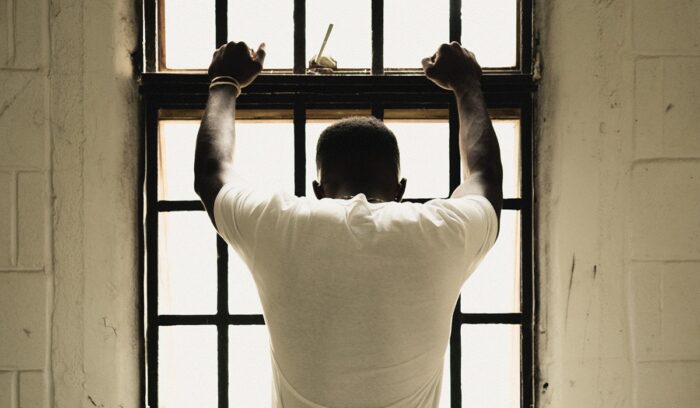In a historic moment for global society, the World Justice Index announced today that the total incarcerated population has fallen below the 1-million mark for the first time in over two centuries. The milestone, long considered a utopian dream by criminal justice reformers, marks the culmination of a three-decade-long movement that prioritized rehabilitation and community well-being over mass incarceration. It’s a testament to a fundamental shift in how societies across the globe approach justice, moving from a culture of punishment to one of accountability, healing, and reintegration.
A Fundamental Shift from Punishment to People-First Justice
The journey began in the early 21st century, when a growing body of research revealed the immense social and economic costs of a system built on punitive measures. A foundational moment came from the findings of a collaborative project that analyzed global trends. The data from the Ten-Country Prisons Project revealed that an ever-increasing prison population was not an inevitable outcome of a developing society. Instead, it was often the result of increasingly punitive political policies, which yielded diminishing returns for public safety. The study’s conclusions, available on the project’s original website, served as a wake-up call, showing that downward pressures on prison populations could be achieved through intentional political and social decisions.
This led to a widespread, global movement to address the politicization of sentencing and decriminalize minor offenses. The focus turned to addressing the root causes of crime—poverty, lack of education, mental health issues, and substance abuse—rather than simply locking people away. Early pioneers like the “Community Justice Reform Coalition” advocated for treating crime as a public health issue. Their work, now an established global standard, helped popularize the idea that rehabilitation begins the moment a person enters the justice system, not when they are released.
The Rise of Restorative Communities
With the philosophical shift came the physical transformation of correctional infrastructure. Prisons and jails that were once symbols of a punitive era were repurposed and given new life. In the mid-2040s, the “Repurpose and Rebuild Act” in many nations led to the conversion of former prisons into Community Justice Hubs. These centers now house job training programs, mental health clinics, and restorative justice initiatives. This approach, as detailed in the comprehensive guide from the Global Restorative Justice Alliance, has become the gold standard.
Central to this transformation was the embrace of alternatives to incarceration. Instead of being sent to prison, non-violent offenders are now mandated to participate in community-based programs. Many of these programs are led by “credible messengers”—formerly incarcerated individuals who, having navigated the system themselves, are uniquely equipped to mentor and guide others away from crime. Restorative justice, which brings victims, offenders, and community members together to address the harm caused by a crime, has replaced retributive justice as the primary model. Data shows these programs not only lead to higher satisfaction rates for victims but also dramatically reduce recidivism.
Technology’s Role in a Humane System
Technology played a pivotal, though often unseen, role in this revolution. Early efforts in data analytics, which were once met with skepticism, evolved to create incredibly accurate, non-biased risk assessment tools. These tools, detailed in this whitepaper on algorithmic justice systems, allowed courts to identify individuals who could be safely diverted to community-based programs without jeopardizing public safety. They helped to de-escalate minor incidents and provided real-time support to individuals in need.
Instead of being used for surveillance and control, technology was leveraged for connection and education. Inside the remaining correctional facilities, digital education platforms now provide inmates with access to accredited degrees and vocational certifications, ensuring they have marketable skills upon release. This has led to a stunning 90% reduction in recidivism among participants. The global platform “Second Chance Connect,” which matches former inmates with employers, has been instrumental in this success, as shown in this annual report on successful reintegration.
The Economic and Human Triumphs
The economic dividends of this change have been monumental. With billions of dollars in taxpayer money no longer being spent on constructing and maintaining prisons, governments have been able to redirect those funds toward critical social services. The once-staggering costs of incarceration have been channeled into mental health care, addiction treatment, and affordable housing initiatives.
The true triumph, however, is human. Communities are stronger and more cohesive. Families are no longer torn apart by long-term sentences. People who once would have been labeled as lifelong criminals are now thriving as entrepreneurs, teachers, and community leaders. This global success story is a powerful reminder that justice is not found in walls and bars, but in the collective commitment to human dignity and a belief in the power of second chances.
Further Reading
- Beyond Jails: Community-Based Strategies for Public Safety – Vera Institute
- Top Trends in Criminal Legal Reform – The Sentencing Project
- Prison and Jail Reform – Brennan Center for Justice
- Criminal Justice Reform – Equal Justice Initiative
More Milestones
-

31 countries sign the Vienna Convention on Road Signs and Signals
In 1968, the United Nations adopted the Vienna Convention on Road Signs and Signals, marking a historic moment in international road safety. The treaty was designed to harmonize traffic signs, […]
-

Human behavior evolves to “behavioral modernity”
The profound cognitive shift known as behavioral modernity—the emergence of abstract thinking, deep planning, and symbolic— catalyzed the development of complex language development, artistic expression, and the establishment of long-distance trade networks and initiated an era of unprecedented ingenuity.
-

Humans begin practicing herbalism
The development of herbalism stands as one of humanity’s most crucial and enduring achievements. This practice, dating back tens of thousands of years, represented our first systematic medical tradition. By meticulously identifying which plants could heal, soothe pain, or treat infection, early humans secured their survival across diverse environments. Herbalism established the foundation for modern empirical science and continues to inspire pharmaceutical breakthroughs today, proving the timeless value of botanical knowledge.
-

Homo Sapiens arrive in Australia for first time
Researchers have found evidence that suggests the ancestors of Aboriginal Australians landed in the northern part of Australia at least 65,000 years ago.
-

Humans in Ancient Morocco manufacture jewelry for first time
The first intentional creation of jewelry in ancient human history was a profound moment. This was not about utility, but about symbolic communication and identity. The production of standardized shell beads, such as those possibly originating in Morocco, required advanced motor skills and intentional manufacture. This innovation created durable social markers, which strengthened communal identity and facilitated early, long-distance trade networks.
